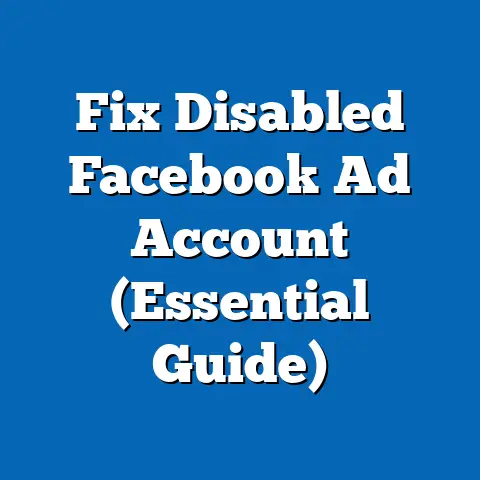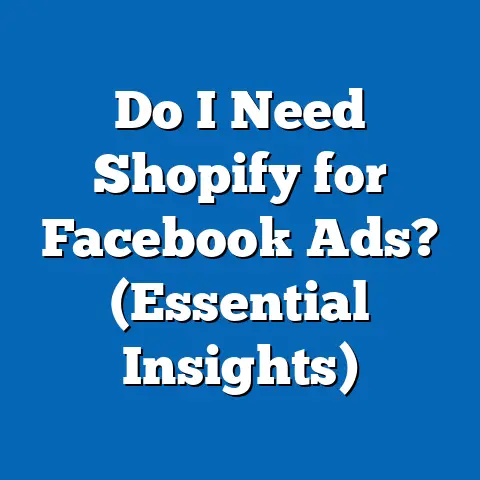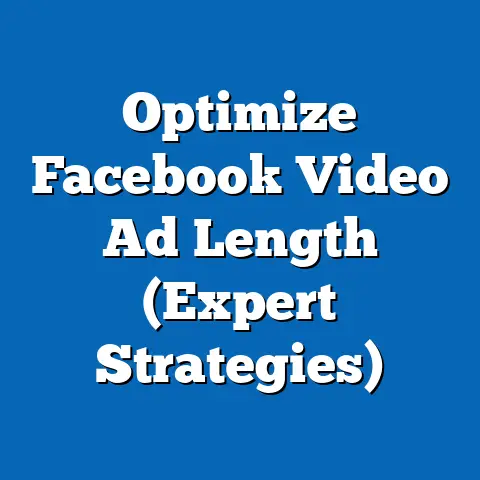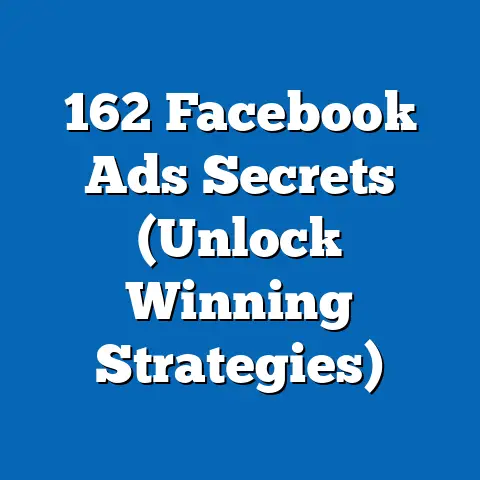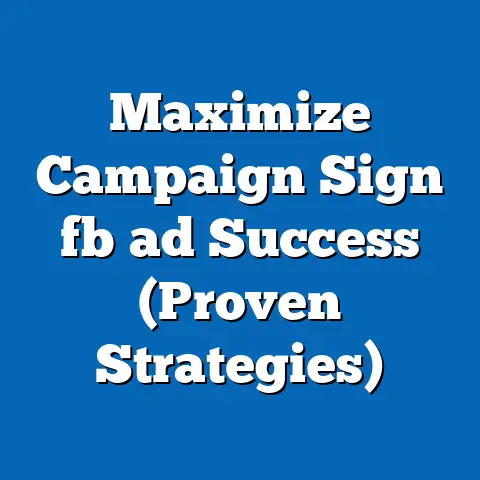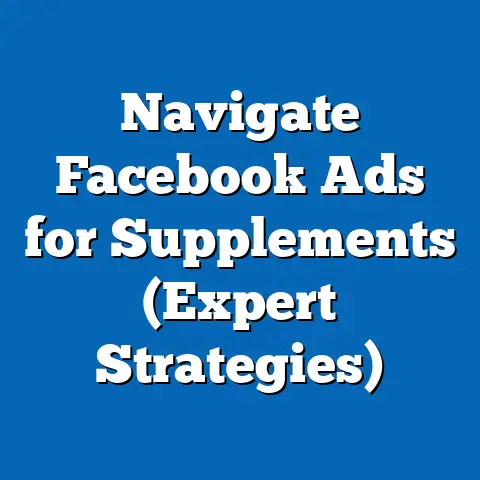Transform Facebook Ads Budget (Discover Cost-Saving Hacks)
In the ever-evolving landscape of digital marketing, one question looms large for businesses of all sizes: Are you spending too much on Facebook Ads without maximizing your return on investment (ROI)? As one of the most powerful advertising platforms with over 2.9 billion monthly active users as of 2023 (Statista, 2023), Facebook offers unparalleled reach, but its complex algorithms and competitive ad space can drain budgets quickly if not managed strategically. For marketers, small business owners, and large enterprises alike, understanding how to optimize ad spend is not just a skill—it’s a necessity in today’s hyper-competitive online environment.
Section 1: Historical Context of Digital Advertising and Facebook Ads
To understand the importance of optimizing Facebook Ads budgets, it’s critical to look at the historical context of digital advertising. The internet’s commercialization in the 1990s marked the dawn of online ads, with the first banner ad appearing in 1994 on HotWired.com, achieving a staggering 44% click-through rate (CTR) compared to today’s average of less than 1% (Interactive Advertising Bureau, 2022). This early era was defined by simplicity—static ads with minimal targeting capabilities dominated the landscape.
Fast forward to 2004, when Facebook was launched as a social networking site for college students. By 2007, it had introduced its advertising platform, initially offering basic ad formats like sidebar banners. The game-changer came in 2012 with the introduction of Custom Audiences, allowing advertisers to target users based on detailed demographic and behavioral data. This shift, coupled with the platform’s massive user growth, positioned Facebook as a digital advertising powerhouse, fundamentally altering how businesses connect with consumers.
The societal impact of this evolution cannot be overstated. Digital advertising, particularly on platforms like Facebook, democratized marketing by enabling small businesses to compete with larger corporations through precise targeting. However, it also introduced challenges—rising costs due to increased competition and privacy concerns following events like the 2018 Cambridge Analytica scandal, which prompted stricter data regulations and changes to ad targeting options. These historical milestones shape today’s budgeting strategies, as marketers must navigate a landscape of high costs, evolving algorithms, and consumer skepticism.
Section 2: Key Defining Characteristics of Facebook Ads Budgeting
Effective budgeting for Facebook Ads is not a one-size-fits-all endeavor. Several core characteristics define a successful approach, each rooted in understanding the platform’s mechanics and user behavior. First, budget allocation must be data-driven—relying on metrics like Cost Per Click (CPC), Cost Per Mille (CPM), and Return on Ad Spend (ROAS) to guide decisions.
Second, flexibility is paramount. Facebook’s auction-based system means costs fluctuate based on demand, audience size, and ad relevance, requiring marketers to adjust budgets dynamically. Third, a focus on audience segmentation ensures that funds are directed toward high-value users rather than broad, untargeted demographics.
Additionally, an often-overlooked characteristic is the alignment of budget with campaign objectives. For instance, brand awareness campaigns may require higher spend to maximize reach, while conversion-focused campaigns benefit from tighter budgets tied to specific actions like purchases or sign-ups. These characteristics highlight the need for strategic planning over arbitrary spending, a principle that underpins the cost-saving hacks discussed later.
Section 3: Societal and Economic Implications of Ad Spend Optimization
The way businesses manage Facebook Ads budgets extends beyond individual ROI—it has broader societal and economic implications. On a societal level, optimized ad spend can level the playing field for small and medium-sized enterprises (SMEs), which often operate with limited marketing budgets. According to a 2022 report by Hootsuite, 54% of SMEs rely on social media advertising as their primary marketing channel, with Facebook being the most popular platform.
Economically, efficient budgeting contributes to resource allocation across industries. When businesses save on ad costs, they can reinvest in product development, employee training, or customer service, fostering innovation and job creation. Conversely, overspending on ineffective ads can strain financial resources, particularly for startups, potentially leading to business failure.
Moreover, the cultural shift toward digital-first consumerism amplifies the importance of cost-effective advertising. As younger generations like Gen Z and Millennials—who prioritize value and authenticity—become primary consumers, businesses must deliver impactful ads without wasteful spending to build trust and loyalty. These implications underscore why mastering budget optimization is not just a marketing tactic but a societal and economic imperative.
Section 4: Cost-Saving Hacks for Transforming Your Facebook Ads Budget
Now that we’ve established the context and significance of budgeting, let’s explore actionable cost-saving hacks. These strategies are grounded in both quantitative data and qualitative insights from marketing experts. They aim to help you reduce waste, improve efficiency, and achieve better results without increasing spend.
4.1 Leverage Audience Insights for Precision Targeting
One of the most effective ways to save on ad costs is by narrowing your audience to those most likely to convert. Facebook’s Audience Insights tool provides detailed data on user demographics, interests, and behaviors, allowing you to create highly specific Custom Audiences. For instance, instead of targeting “all women aged 25-45,” refine your audience to “women aged 25-45 who have engaged with beauty products in the past 30 days.”
According to a 2021 study by WordStream, ads with tightly defined audiences can lower CPC by up to 37%. This precision reduces irrelevant impressions, ensuring your budget is spent on users with genuine interest. Start by analyzing past campaign data to identify high-performing segments, then build lookalike audiences to scale reach without sacrificing relevance.
4.2 Optimize Ad Creative for Higher Engagement
High-quality ad creative can significantly reduce costs by improving ad relevance scores, which Facebook uses to determine ad placement and cost. Ads with strong visuals, compelling copy, and clear calls-to-action (CTAs) often achieve higher CTRs, lowering overall CPM. For example, carousel ads showcasing multiple products can increase engagement by 20-30% compared to single-image ads (Facebook Business, 2023).
Test different formats—videos, images, and interactive polls—to see what resonates with your audience. Use A/B testing to compare variations and allocate budget to the best-performing creatives. Remember, investing time in creative optimization upfront can save substantial costs in the long run by reducing the need for higher bids to gain visibility.
4.3 Utilize Automated Bidding Strategies
Facebook offers automated bidding options like Cost Cap and Bid Cap, which help control spend while maximizing results. Cost Cap, for instance, allows you to set a maximum average cost per action (e.g., purchase or lead), ensuring campaigns don’t exceed your desired threshold. A 2022 experiment by Social Media Examiner found that using Cost Cap reduced acquisition costs by 25% compared to manual bidding for conversion campaigns.
To implement this, start with a small test budget to allow the algorithm to learn, then scale up as performance stabilizes. Automated bidding takes the guesswork out of budget allocation, particularly for advertisers with limited time to monitor campaigns manually. However, regularly review results to ensure the algorithm aligns with your goals.
4.4 Schedule Ads for Peak Performance Times
Timing can dramatically impact ad costs and effectiveness. Running ads during off-peak hours or days when competition is lower can reduce CPM and CPC. Use Facebook’s ad scheduling feature to deliver ads when your target audience is most active, based on insights from past campaigns or industry benchmarks.
For example, a retail brand targeting working professionals might find better engagement on weekday evenings or weekends. A 2020 report by Sprout Social noted that CPMs can drop by 15-20% during non-peak hours for certain industries. Experiment with different schedules and analyze performance data to identify cost-efficient time slots.
4.5 Focus on Retargeting High-Intent Users
Retargeting—showing ads to users who have previously interacted with your brand—is a proven cost-saving tactic. These users, whether they’ve visited your website, engaged with a post, or abandoned a cart, are already familiar with your business, making them more likely to convert at a lower cost. According to Facebook’s own data, retargeting campaigns can achieve up to 70% lower cost per conversion compared to cold audience campaigns (Facebook Business, 2022).
Set up retargeting by installing the Facebook Pixel on your website to track user actions. Create dynamic ads that showcase products or services users have shown interest in, personalizing the experience. Allocate a portion of your budget—experts suggest 20-30%—to retargeting to maximize ROI without overspending on new user acquisition.
4.6 Monitor Frequency to Avoid Ad Fatigue
Ad fatigue occurs when users see the same ad too often, leading to decreased engagement and higher costs. Facebook’s frequency metric shows how many times, on average, a user has seen your ad. A frequency above 3-5 often signals diminishing returns, as users become desensitized.
To combat this, cap frequency at a reasonable level (e.g., 3 exposures per user) and refresh creatives regularly to maintain interest. A 2021 study by AdEspresso found that keeping frequency below 4 can reduce CPM by up to 18%. Balancing reach and frequency ensures your budget isn’t wasted on overexposed audiences.
4.7 Capitalize on Organic Content to Complement Paid Ads
While not a direct budgeting hack, leveraging organic content can reduce reliance on paid ads, stretching your budget further. Share valuable, engaging posts—such as tutorials, customer testimonials, or behind-the-scenes content—to build a loyal following. Boost high-performing organic posts with a small budget to amplify reach without starting from scratch.
A 2022 survey by HubSpot revealed that 62% of marketers use boosted posts as a cost-effective alternative to full-scale ad campaigns. This hybrid approach fosters brand visibility and engagement at a fraction of the cost of traditional ads. Focus on creating content that aligns with your audience’s interests to maximize organic traction.
Section 5: Technological and Algorithmic Factors Influencing Costs
Facebook Ads budgeting isn’t just about strategy—it’s also shaped by technological and algorithmic factors beyond a marketer’s control. The platform’s machine learning algorithms prioritize ads based on relevance, bid amount, and estimated action rates, meaning even a well-planned budget can be derailed by low-quality ads or poor targeting. Staying updated on algorithm changes, such as the iOS 14.5 update in 2021 that limited tracking capabilities, is crucial for cost management.
Additionally, competition within the ad auction drives costs up, especially during high-demand periods like holidays. Industries like e-commerce and finance often face higher CPMs due to saturation, with average costs reaching $14-$16 per 1,000 impressions during peak seasons (WordStream, 2023). Understanding these external factors helps marketers anticipate cost fluctuations and adjust budgets proactively.
Section 6: Comparing Budget Strategies Across Business Sizes
Budget optimization strategies vary across business sizes due to differing resources and goals. Large enterprises often have the capital to experiment with broad campaigns and high-frequency ads, absorbing higher costs for long-term brand building. Their focus might be on maximizing reach, with budgets in the tens of thousands per month.
In contrast, SMEs and startups prioritize efficiency, often allocating smaller budgets—sometimes under $1,000 monthly—to hyper-targeted campaigns. They rely heavily on retargeting and organic content to stretch limited funds. A 2022 study by Buffer found that 78% of small businesses spend less than $5,000 annually on social media ads, compared to just 12% of large corporations.
Solo entrepreneurs or freelancers, meanwhile, may operate with budgets as low as $50-$100 per campaign, focusing on niche audiences and low-cost tactics like boosted posts. These differences highlight the importance of tailoring budget strategies to business scale while recognizing that cost-saving principles apply universally.
Section 7: Nuances and Diversity in Budgeting Approaches
While the hacks above provide a framework, it’s essential to acknowledge the nuances in budgeting approaches. Industry type, target audience, and geographic location all influence costs and strategies. For example, B2B companies targeting decision-makers may face higher CPCs due to smaller, specialized audiences, while B2C brands often benefit from broader, cheaper reach.
Cultural factors also play a role—ads targeting diverse demographics may require localized messaging, affecting creative costs. Additionally, not all businesses measure success the same way; a non-profit might prioritize impressions over conversions, altering budget priorities. Recognizing this diversity prevents a cookie-cutter approach, ensuring strategies are adapted to unique contexts.
Section 8: Implications for Businesses and Marketing Landscapes
Mastering Facebook Ads budgeting has far-reaching implications for businesses and the broader marketing ecosystem. For individual companies, cost optimization can mean the difference between profitability and loss, particularly for SMEs operating on thin margins. It also enhances competitiveness, allowing businesses to stand out in crowded digital spaces without overspending.
On a larger scale, widespread adoption of cost-saving practices could shift the digital advertising landscape. If more advertisers prioritize efficiency, platforms like Facebook may adjust pricing models or introduce new tools to maintain revenue, as seen with the rollout of Advantage+ campaigns in 2023, which automate ad placement for cost efficiency. This dynamic interplay between advertisers and platforms shapes the future of online marketing.
In the workplace, budget optimization skills are increasingly in demand, with roles like digital marketing specialists requiring expertise in cost management. As businesses across industries digitize, employees who can deliver results on lean budgets will be invaluable, influencing hiring trends and professional development.
Section 9: Forward-Looking Insights and Uncertainties
Looking ahead, the future of Facebook Ads budgeting is both promising and uncertain. Emerging technologies like artificial intelligence (AI) and augmented reality (AR) could revolutionize ad formats, potentially increasing costs for cutting-edge campaigns but also offering new ways to engage audiences efficiently. Facebook’s parent company, Meta, is already investing heavily in the metaverse, hinting at immersive advertising opportunities that could redefine budgeting strategies.
However, uncertainties remain. Regulatory changes, such as evolving privacy laws in the EU and US, may further limit targeting capabilities, forcing advertisers to rethink budget allocation. Economic factors like inflation or recession could also constrain marketing budgets, making cost-saving hacks even more critical.
Additionally, consumer behavior continues to evolve—Gen Z’s preference for authenticity and video content (e.g., Reels) may shift ad spend toward short-form, organic-style formats. Marketers must stay agile, balancing innovation with fiscal responsibility to navigate these unknowns.
Conclusion: Transforming Your Approach to Facebook Ads Budgeting
Optimizing your Facebook Ads budget is not just about cutting costs—it’s about reimagining how you connect with audiences in a digital-first world. From leveraging precision targeting and automated bidding to embracing organic content and retargeting, the cost-saving hacks outlined in this article provide a roadmap for transforming ad spend into measurable results. Historical context reminds us of the rapid evolution of digital advertising, while societal implications highlight the broader impact of efficient budgeting on businesses and economies.
As we move into an era of technological innovation and regulatory change, the ability to adapt will be paramount. While uncertainties loom, one thing is clear: those who master the art of budget optimization will not only survive but thrive in the competitive landscape of Facebook advertising. So, take a critical look at your current ad spend—are you ready to transform it with these cost-saving strategies?

